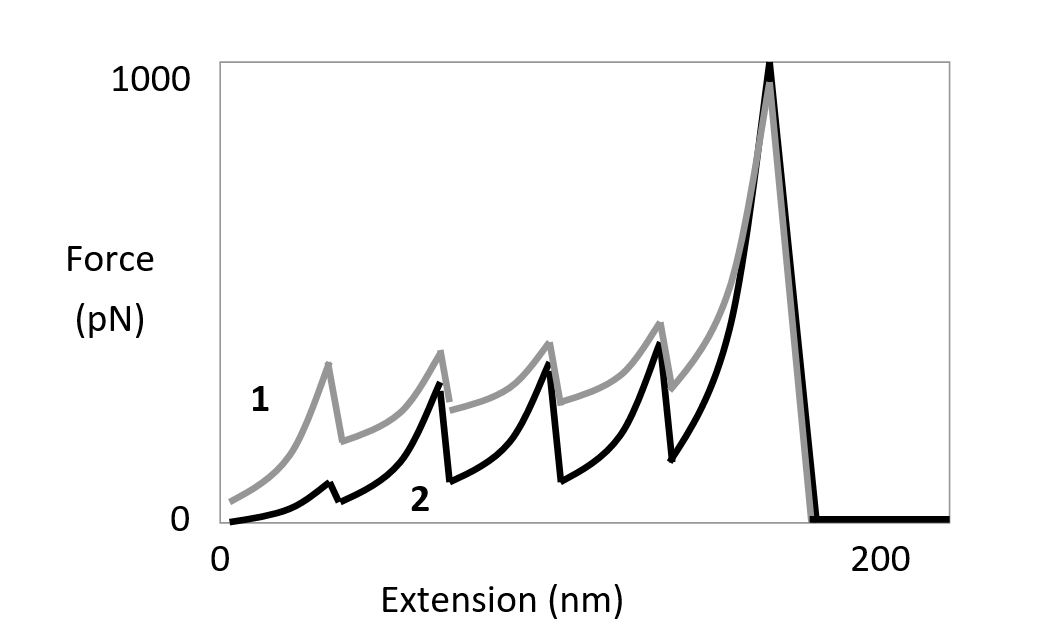Short Answer
Atomic force microscopy (AFM) is used in an experiment to unfold a multidomain protein by applying mechanical force. The protein contains several copies of an immunoglobulin domain that are unfolded one by one as the two ends of the molecule (one attached to a cover slip, and the other to the AFM tip) are being pulled apart, resulting in the "sawtooth" force-extension curves shown below. The same experiment is done twice, once in the presence and once in the absence of a chaperone protein that stabilizes the immunoglobulin domains. Answer the following questions based on this graph.

-According to the force-extension graph, which curve (1 or 2) would you expect to correspond to the reaction in the presence of the chaperone protein? Write down 1 or 2 as your answer.
Correct Answer:

Verified
Correct Answer:
Verified
Q2: When the gene encoding a certain cytoskeleton
Q3: Atomic force microscopy (AFM) is used in
Q4: What is the advantage of using quantum
Q5: In the diagram below, a logarithmic scale
Q6: Electron microscopy samples are often chemically fixed
Q7: Indicate whether each of the following descriptions
Q8: Indicate true (T) and false (F) statements
Q9: You have generated strains of Drosophila melanogaster
Q10: The presence of which of the following
Q11: Consider an engineered chimeric protein made from